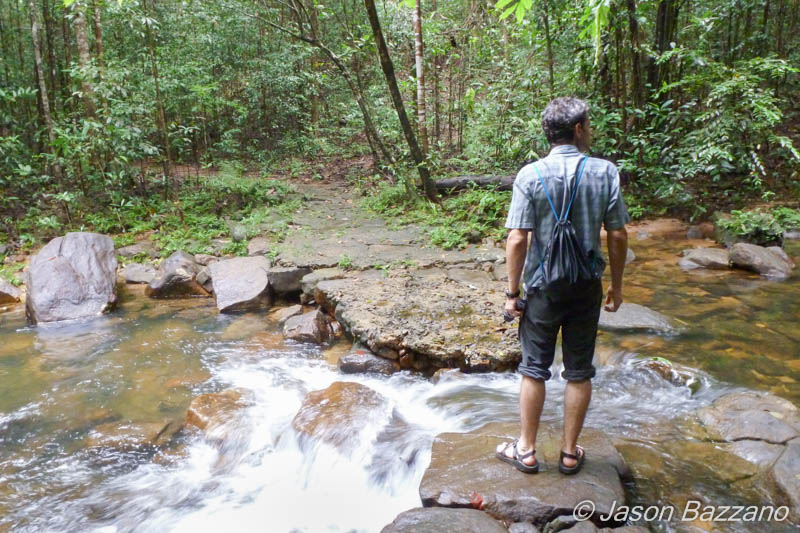A few years ago, I found myself on a 12-hour bus ride through the countryside of Sumatra. I was on my way to a remote national park where I was planning to camp for a week or two while photographing rainforest critters. I was carrying two backpacks: one larger one filled with camping gear, and one smaller one filled with my camera gear that I carried strapped to my front. Altogether, they probably weighed around 50 pounds.
As it turned out, the cargo hold of the bus was completely full, as it was apparently transporting the better part of a disassembled car. That left my fellow passengers with two options for stowing our gear: tied to the roof of the bus, or in our lap.
Noting that it had been raining pretty hard lately, I opted to carry my bags on my lap.
We lurched off before daybreak. After the initial pre-trip hullabaloo, the bus was relatively calm and quiet. There were no lights inside the bus, and many of the passengers were asleep. Those that were awake were mostly silent: the main sounds were the pounding of the rain on the roof of the bus, the collective gasp of the passengers after a daring pass or a near-miss of a road obstacle, the soft retching of the carsick passengers, and the frantic puffing of the guy crammed into the seat next to me, as he chain-smoked clove cigarettes.
Not so bad, I thought. After a short while, though, with the weight of my backpacks pinching off my femoral arteries, I began to appreciate how uncomfortable the rest of the day was going to be. I tried cramming my bags between my knees and the seat in front of me, but that wasn’t even close to working – there was barely enough room for me in my seat, let alone me plus my bags. I looked among the sleeping passengers and figured that leaving the bags in the aisle would be my best option.
I fared pretty well for the first couple hours, but after sunrise traffic up and down the aisle steadily increased, necessitating that I hoist my gear out of the way every minute or two. More people were getting sick, too, and not always doing a great job of containment. By the time most people had tucked into their packed breakfasts, a crescendo of spilled curry, cigarette ash, phlegm, sugary drinks, and vomit was raining down from all angles. When we stopped for bathroom breaks, the bus conductor would squeegee out the aisle with a push broom.
I couldn’t help but be impressed with the sheer volume of debris generated. But I was also concerned for my bags. I’d already been battling mold issues with my gear from camping in such a constantly wet and humid environment, and I didn’t want to face the microbial aftermath of a 12-hour bus floor marinade.
As the slurry of bus goo lapped against my sandals in time to the erratic heaving of the bus, I hefted my bags back onto my lap.
Anyway… Long story short, I spent a good portion of that trip fantasizing about traveling without all the bulky gear. Just a single daypack with the bare necessities. Mobility, comfort, and freedom. Ah, it would be heaven…
Traveling heavy:
My travel strategy for that trip in Indonesia was the same as just about all the trips I went on before I was married: I would load myself down with my two bags of camping and camera gear, top it all off with as much food as I could carry, and then charge off into the rainforest to camp and photograph my brains out for as long as the food would last. Then I’d take a bus to the nearest town, clean off the mud and the mold, recharge my camera batteries, buy some more food, and repeat. I’d do this for months on end (as you can imagine, this type of travel has a pretty low overhead), until I eventually ran out of savings and had to return home.
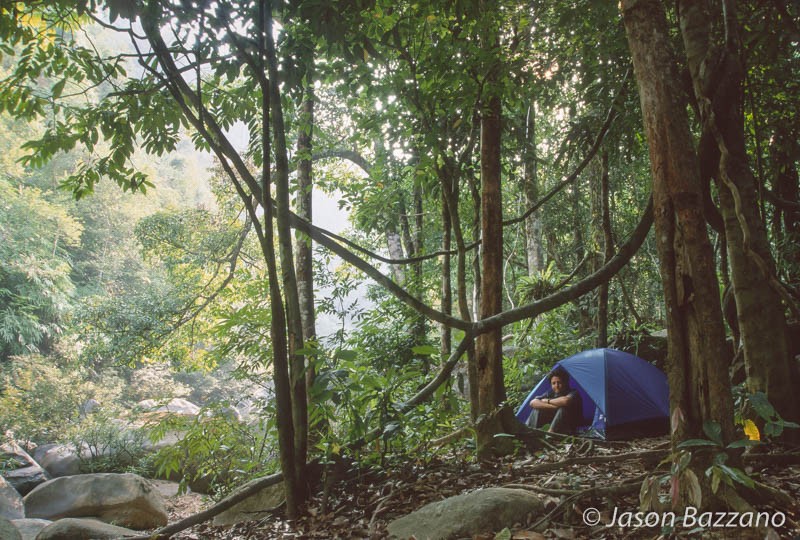
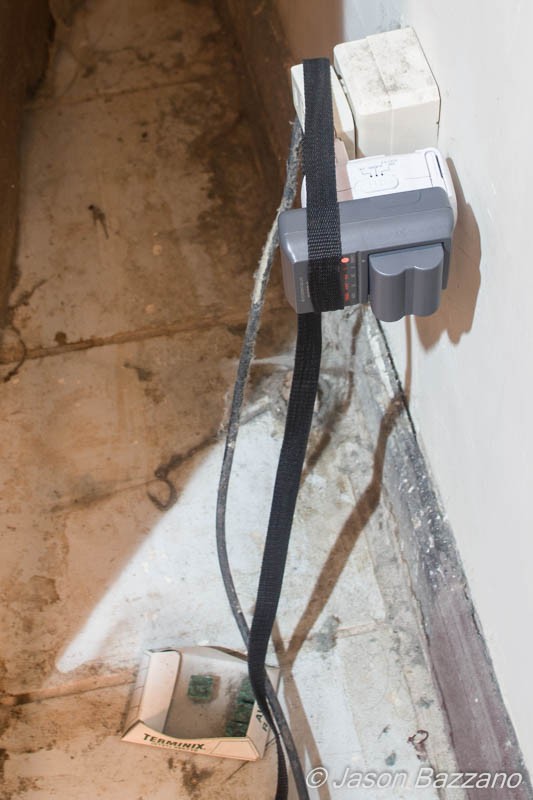
There were usually no facilities in the places I went camping, so the trips weren’t feasible if I didn’t bring my own camping gear. And I was having a lot of fun with the specialized camera equipment, so I wasn’t about to leave that behind, either. This meant I needed to carry around a ton of luggage with me. And not just on cramped bus rides, but actually hiking it into and out of the jungle boonies along with a week’s supply of tinned sardines.
But, that was my choice – I knew what I was in for. I love photography, I love camping, and I love jungles. A little bit of discomfort along the way is totally worth it for the overall experience. In all my fantasies on that bus ride in Sumatra about traveling light, I didn’t consider it a serious option at the time: if I were to travel light, I couldn’t bring a backpack full of camping gear, nor would I have room for the camera gear. Where the heck would I go if I couldn’t go camping? And what would I do if I didn’t spend day and night photographing?
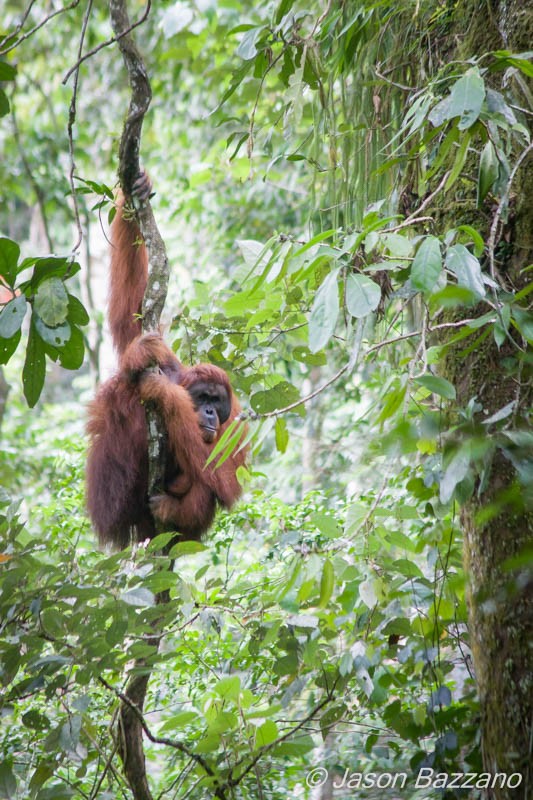
Traveling light: an alternative to all the bags:
It took a change of circumstances (marriage) for me to come up with an enjoyable alternative to my expedition-style travel strategy. Nowadays, of course, the main priority while traveling is to enjoy activities as a family. While I still love myself a good expedition, the narrow focus on camping and photography of my solo traveling days doesn’t translate well to a group setting. Thankfully, however, camping and photography are still on the menu: luckily my wife is also into camping, and even more luckily she has remarkable patience for my photography (thanks, sweetie!) – so I’m still able to engage in these activities (in reasonable moderation) while traveling.
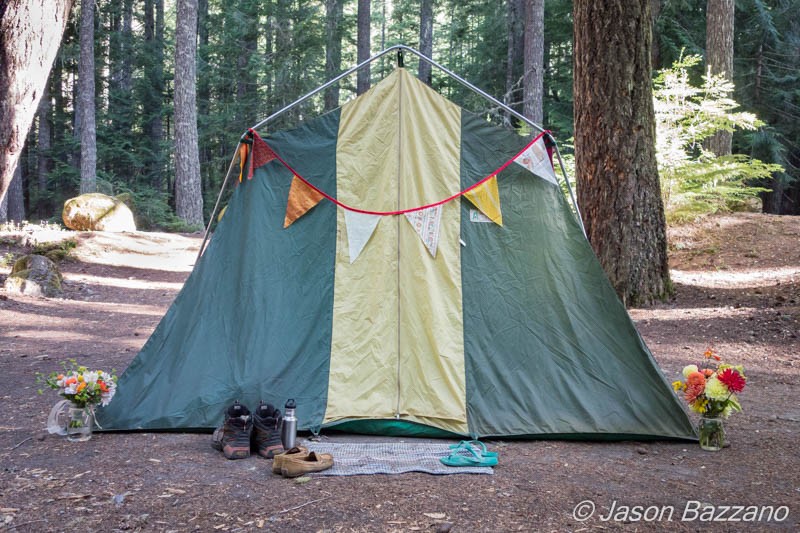
If we’re going to go camping abroad, we’ll generally stick to places that can provide us with all the gear we need. Of course, this limits the number of places that we can go, but we’ve found that there are still quite a few options out there.
And since I don’t have the time (nor the inclination) to dedicate every waking moment to photography on a family trip, I can leave the tripod, SLR, and lenses behind – in exchange for a much more compact (but still reasonably fancy and creativity-enabling) point-and-shoot camera.*
Boom. All of a sudden I’m 40 pounds lighter and I’m looking at the road ahead from a very different perspective. Travel is not only still fun, but it’s shiny and alluring with new-found novelty.
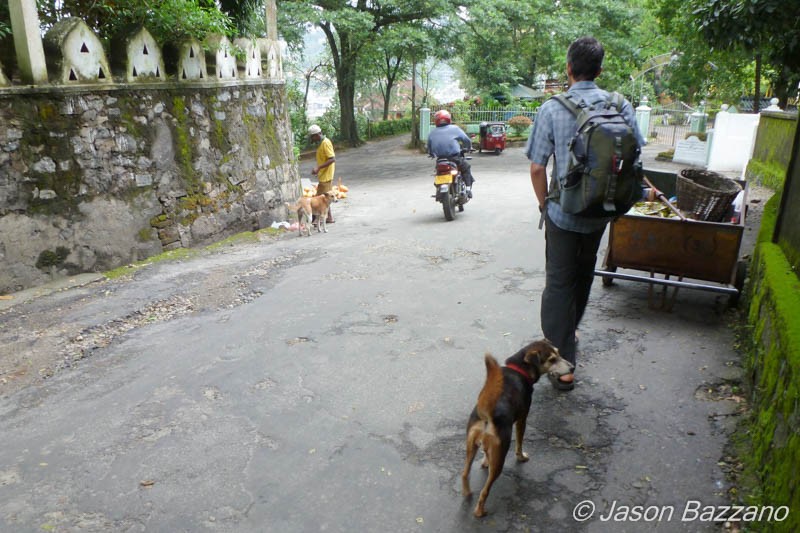
Less is more:
The last couple international trips we’ve gone on have been daypacks only, and I have to say, it’s been awesome. Here are some things that I’ve discovered while traveling light:
- You don’t feel like you need an armed escort to bring you from one place to another. For example, when my wife and I arrived into the maze that is old town Varanasi (India), it took us over an hour of wandering around trying to secure lodging (the streets are too narrow for taxis or buses, so walking is the only option). With so little luggage, the task was not only a piece of cake, but it was fun! Even with the persistent touts trying their darnedest to lead us astray, I was still able to enjoy the impromptu exploration of the ancient community along the Ganges. It would have been faaaar less entertaining trying to sidestep the bullshit (both literal and figurative) had we been loaded down with giant packs.
- You can travel in complete comfort with your pack in your lap, even on a chicken bus. No need to worry about your bag getting stolen from the cargo hold beneath the bus or rained on while on top of the bus.
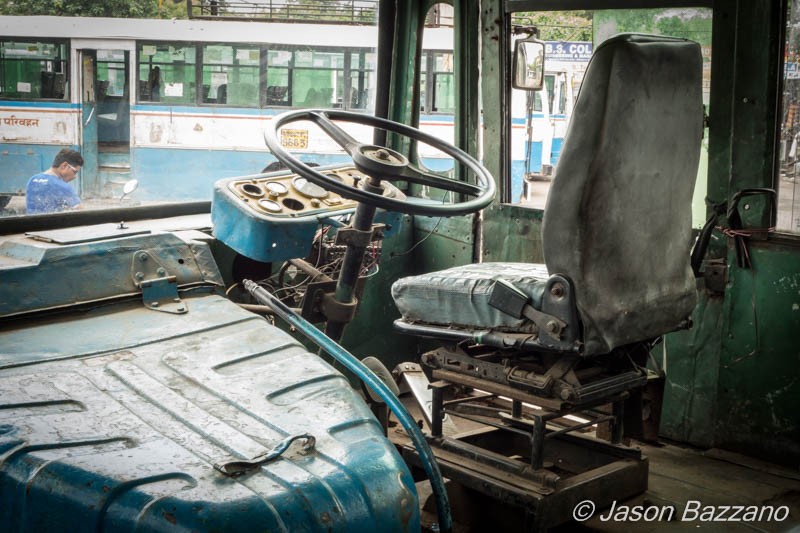
- You can have a fun day out and about with all your gear on your back if you’re between lodgings. Checkout time is 11am, but the train doesn’t leave until 6pm? No big deal. Go for a hike, explore around town, find a quiet place to read a book – you’ve got plenty of options.
- Flying without a checked bag is cheaper and waaaay easier. There’s something strangely satisfying about simply walking past the baggage claim while everyone else on your flight waits with bated breath as the conveyor belt slowly reveals their inevitably mangled belongings.
- The thought of a Long Travel Day doesn’t fill your heart with dread.
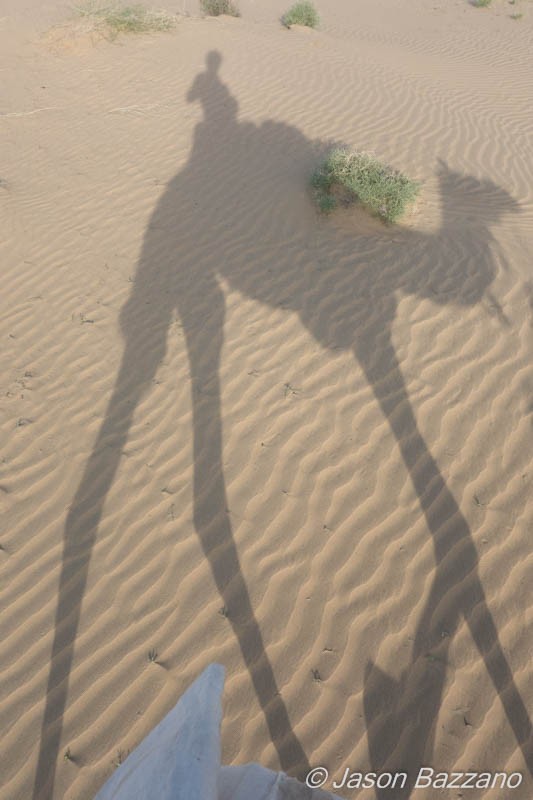
- Traveling light just makes everything seem so easy!
Tips for traveling light:
Here are some things to remember when you’re packing:
- Every little gadget of convenience you bring makes your bag less convenient overall.
- You will not die if you forget anything.
- Just bring a couple sets of clothes, and plan on doing sink laundry every couple days.
- Do NOT just cram everything into your pack willy-nilly – there’s an art to packing such that your stuff is easily accessible (especially the items you use most often). This will just take some practice.
- Make sure everything you’ve packed is allowed to be carried on in a plane. Note that some airports have their own regulations that may be different.
Jason’s list of stuff to bring when traveling light:
Without further ado, here’s my unabridged list of stuff to bring to the tropics:
Things to carry on your person:
- Wallet, cash, debit card for ATMs, credit card
- Passport
- Money belt
(Mainly for your passport. You shouldn’t be carrying crazy amounts of cash).
- Watch with alarm
- An old smartphone and charger (these are useful for accessing wifi, which seems to be everywhere these days. If you have an old quad-band, you can also plug in a cheap local pre-paid SIM card to make local calls.)
Clothes:
- 2x quick-dry t-shirts
- 1x long-sleeved quick-dry button-up shirt
(for keeping the mosquitoes [and sun] off your arms)
- 1 pair of trousers (generally a better idea than shorts – not only do they protect you better from the sun, but shorts may not culturally appropriate in some places. Zip-offs trousers are occasionally handy but probably not worth it. Jeans are NOT a good idea – they’ll never dry out.)
- 2-3 pairs of cotton underdrawers (this is one place where you really want cotton).
- Wide-brimmed sun hat (get one that mashes down and fits flat into a small pack)
- Swim trunks
- Long sleeve rash guard (if you’re spending a fair amount of time in the water, these are awesome for blocking UV).
- River sandals
(These are AWESOME for traveling in the jungle. Equally at home walking through a flooded city street and fording a rainforest stream, they dry quickly and resist the mold issues that shoes have in such a sopping environment. While they do tend to brand you as a foreigner, it’s unlikely that your footwear was the only thing that blew your cover.)
- Flip flops
Camera stuff:
- (Note: I’ll address camera gear and travel specifically in another article; this is just a quick and dirty list.)
- Point-and-shoot camera
- Mini camera bag
- Small plastic box of other camera gear and miscellaneous electronics:
- Cleaning supplies
- Spare SD cards
- Spare batteries
- Battery charger
- Outlet adapter
Small bits:
- Sunglasses
- Duct tape wrapped around a short pencil
- A few safety pins (these come in handy when you least expect it)
- A few spare plastic grocery bags (useful for separating wet gear, etc.)
- Earplugs
- A good headlamp
with batteries (if you’re going to be doing a lot of night walks, consider bringing a few sets of rechargeable batteries and a charger)
- First aid kit
- Journal
- Pen
- Mini combo locks for the outside of your backpack (A slight deterrent against casual rummaging – just don’t expect a miracle)
- Snacks (You should keep a good supply of snacks in your bag at all times. You never know when your bus is going to be stuck in the middle of nowhere for 4 hours because of a landslide…)
Other miscellanea:
- Backpack to carry it all! (You should get something that you can comfortably carry [fully loaded] all day long. I wouldn’t go much larger than 30 liters, though; it’ll be inconvenient for carrying on buses and such [even if you can lug it around without issues].)
- Water bottle
- Umbrella
(rain jackets are pretty much useless in the tropics.)
- Guide book
- Phrase book (if you don’t speak the local language)
- Reading material (ideally a cheap, thick paperback with small print that’s small and will last you a good long while… and that you won’t feel too bad about jettisoning when you’re done with it.)
- String bag day pack (a bag in a bag! These are AWESOME for running quick errands, if you have a place to leave your main bag. They can also serve as a “personal item” should you find yourself returning home with more stuff than you brought.)
- Photocopy of passport
- Toiletries:
- The usual stuff (Just make sure all your liquids are in containers no larger than 100ml and they all fit into a quart size bag.)
- Insect repellent (something with at least 30% DEET – I’ve found that concentrations over 15% can be impossible to find in some countries – definitely bring this from home.)
- camp towel
Travel = freedom:
Travel is the ultimate freedom. YOU choose what your priorities for the trip are, and then you make it happen. If your goals for the trip specifically require that you tote along a whole bunch of supplies, well, just make sure that the payoff will outweigh the hassle. But remember: this is your trip – you can do whatever you want. And do you really want to carry around a ton of bags?
Do you have any ideas for traveling light that I didn’t mention? I’d love to hear about them in the comments below!
* Yeah, it can be painful to leave behind the fancy SLR camera with all the lenses and flash units and such. But never fear: you CAN do some pretty fun photography with a point-and-shoot camera, with a little creativity. I’ll write an article on this specifically in the near future.

